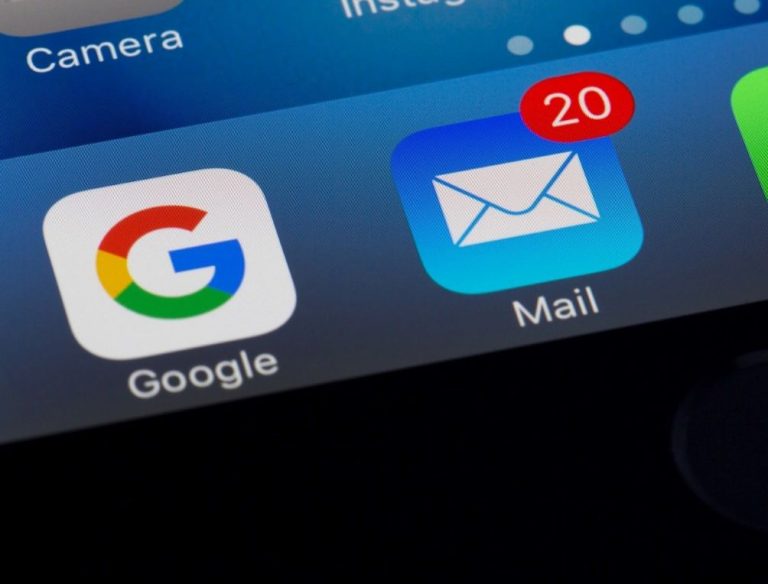
Why a Blog Launch Checklist is Essential
If you’re a new blogger, you might be wondering why it’s important to have a blog launch checklist. The truth is that launching a blog can be overwhelming, especially if you’re doing it for the first time. There are so many things to consider, from choosing a domain name to creating content and promoting your blog on social media.
A comprehensive checklist can help ensure that you’ve covered all the essential steps of launching your blog. With the help of a blog launch checklist, new bloggers can avoid common mistakes and ensure that their blogs are successful right from the start.
The checklist provides a step-by-step guide to everything that needs to be done before and after launching your blog. Without this guide, it’s easy to overlook important steps and end up with a less-than-perfect result.
Launching without proper preparation will only lead to frustration and disappointment in your blogging journey. Therefore, having an effective checklist is crucial for every blogger who wants to increase their chances of succeeding in the crowded online world.
This post contains affiliate links. If you use these links to buy something, I may earn a commission at no additional cost to you.

Pre-Blog Launch Checklist
Choose a Niche and Target Audience
The first step in launching a successful blog is to choose a niche that you are passionate about and have expertise in. This could be anything from cooking to fashion to finance.
Once you have identified your niche, it’s important to narrow down your target audience. Who do you want to appeal to with your content?
Are they busy moms, college students, or retirees? Knowing your target audience will help you create content that resonates with them and keeps them coming back for more.
Choose a Domain Name and Hosting Provider
Choosing the right domain name is crucial for establishing a strong online presence. It should be short, memorable, and easy to spell. Check out Namecheap here for great prices and service.
When choosing a hosting provider, make sure they offer reliable service and excellent customer support. You don’t want your website crashing or experiencing downtime because of poor hosting service. I use Bluehost and they have been great.
Install WordPress and Choose a Theme
WordPress is the most popular Content Management System (CMS) for building websites. It’s user-friendly and offers countless customization options.
After choosing WordPress as your CMS, it’s time to select a theme that aligns with your niche and target audience. There are many free themes available, but investing in a premium theme may offer more flexibility and features.
Elementor has a fantastic site builder, check them out here!
Set Up Essential Pages to Launch Your Blog (About, Contact, Privacy Policy)
Your blog should include essential pages such as an About page that introduces yourself or your brand. A Contact page where visitors can get in touch with you or provide feedback. And a Privacy Policy page that discloses how you collect data from visitors.
Create Social Media Accounts
Social media platforms like Facebook, Twitter, Instagram and Pinterest are great tools for promoting your blog content. Identify the social media platforms where your target audience spends their time and create accounts for your blog on those platforms. When you launch your blog, make sure to post regularly. Engage with your followers, and share content from other bloggers in your niche to increase your reach.

Content Creation Checklist
Now that you are almost ready to launch your blog, it’s time to start creating content that will attract and engage your audience. The first step is to develop a content strategy and an editorial calendar. A content strategy outlines the topics you want to cover on your blog, while an editorial calendar helps you plan when to publish each post.
This ensures consistency in your posting schedule and helps you stay organized. When writing your blog posts, make sure they provide value to your readers.
Write about topics related to your niche that they will find interesting and informative. You can also conduct keyword research to discover popular search terms related to your niche, which will help with search engine optimization (SEO).

Optimizing Your Content for SEO
Search engine optimization is crucial for getting traffic from Google and other search engines. To optimize your blog posts for SEO, use relevant keywords throughout the post and include them in the title tag, meta description, headings (H1, H2), URL slug, and image alt tags.
In addition to using keywords strategically, make sure your blog posts are well-structured with clear headings that break up the text into sections. This makes it easier for readers to scan the content and find what they are looking for quickly.
Including Engaging Visuals in Your Posts
A picture is worth a thousand words – this holds true when it comes to blogging as well. Including engaging visuals such as images or videos can make a huge difference in how long visitors stay on your site overall engagement rates. You don’t need fancy equipment or be a professional graphic designer or photographer!
There are tons of free resources out there like Unsplash or Canva where you can get high-quality images for free or create custom graphics from scratch without any previous experience. Just make sure the images used are relevant to your content and align with your brand image. Get a free guide to Canva here.
Also, don’t forget to add alt tags to your images for additional SEO benefits. Following this checklist will ensure that you create quality blog content that drives traffic, engages readers and helps you achieve long-term success as a blogger.
So, you’ve finally launched your blog and you’re excited to start sharing it with the world. But how do you get people to actually read your content? That’s where promotion comes in.
You can have the best content in the world, but if nobody knows about it, it won’t make a difference. Here are some ways to promote your blog:
Share Your Blog on Social Media Platforms
High on your blog launch checklist is-Social media. It is one of the most powerful tools for promoting your blog. It allows you to reach a large audience quickly and easily. Make sure you have social media accounts set up for each platform that you want to use (Facebook, Twitter, Instagram, Pinterest, etc.).
When you publish a new post on your blog, share it across all of your social media channels. Don’t just share once and forget about it – continue sharing multiple times over the coming weeks or months.
When sharing on social media, be sure to write catchy headlines and include engaging visuals (such as images or videos) that will grab people’s attention as they scroll through their feeds. Also, don’t be afraid to experiment with different types of posts – polls, quizzes or infographics might resonate better with some followers than traditional posts.

Reach Out To Other Bloggers In Your Niche For Collaboration Opportunities
Collaborating with other bloggers in your niche is a great way to promote your blog while also building relationships within the blogging community. Research other bloggers who cover similar topics as yours and reach out to them proposing collaboration ideas such as guest posting or co-promotion campaigns. When reaching out for collaboration opportunities keep in mind that collaborating should benefit both parties involved so come up with mutually beneficial ideas rather than just promoting yourself.
Use Email Marketing Strategies To Promote Your Blog
Another effective way of promoting your new blog is through email marketing. Email marketing is a cost-effective way to connect with your audience and promote your content. Start by building an email list of people who are interested in your niche. You can provide them with exclusive content and offers for being on the subscription list.
When creating an email marketing campaign, make sure you personalize each message. You do this so that readers know they’re receiving valuable information. It’s also important to include call-to-actions (CTAs) in the emails, whether it’s asking readers to share your content or visit your website.
Promoting your blog takes time and effort but it’s essential for driving traffic to your site. By utilizing social media platforms, collaborating with other bloggers in your niche and implementing email marketing strategies you’ll be able to quickly grow your audience and establish yourself as a thought leader in the blogging community.
Post-Launch Checklist
Monitor Website Analytics to Track Traffic, Engagement, and Conversion Rates
Once you’ve launched your blog, it’s important to monitor website analytics to track your site’s performance. Analytics tools like Google Analytics can help you gain insight into traffic sources, user behavior, and conversion rates.
By tracking this data regularly, you can identify areas of your site that need improvement. And then you can make informed decisions about future content strategies. To get started with website analytics, install a tracking code on your website (usually provided by your hosting provider or analytics tool) and set up goals that align with your business objectives.
For example, if you’re trying to increase email sign-ups through your blog, set up corresponding conversion goals in Google Analytics. These goals are tracked over time. You can analyze the data and make informed decisions about how to optimize your content for higher engagement and conversions.
Make Necessary Adjustments Based on Analytics Data
Once you’ve gathered enough data from website analytics tools like Google Analytics, it’s time to use that information to improve the performance of your blog. Look for patterns in user behavior or common sources of traffic that may signal areas of opportunity for growth.
For example, if most of your traffic is coming from social media platforms like Instagram or Pinterest but those visitors aren’t converting into email subscribers or customers at a high rate, consider adjusting the messaging on those platforms or creating more targeted landing pages. Another area where analytics data can be useful is content strategy.
After launching your blog, take a look at which types of posts are performing best in terms of engagement. This can be shares or comments versus traffic volume (pageviews). Use this information to create more content that resonates with both audiences – high-engagement posts may be great for building community around your brand while high-traffic posts may help attract new visitors to your site.
Regularly Update Your Site with Fresh Content
One of the key factors that can influence website traffic and engagement is the frequency and quality of your content updates. Regularly updating your blog with fresh, high-quality content can help keep readers engaged and coming back for more.
In addition, Google tends to favor websites that are updated frequently with fresh content, so regular posting can also help improve your search engine rankings. To keep up with a consistent posting schedule, consider creating an editorial calendar that outlines upcoming topics and deadlines for each post.
This can help you stay organized and on track with your content creation goals. Additionally, try to mix up the types of posts you publish. Include different formats like listicles or video tutorials. This will keep things interesting for readers while also targeting different keyword phrases for search engine optimization purposes.
Ultimately, launching a successful blog requires a combination of careful planning, strategic execution, and ongoing optimization efforts. By following the tips outlined in this article – from pre-launch planning through post-launch analytics monitoring – you’ll be well on your way to building a thriving online presence that engages readers and drives business success.

Conclusion to Blog Launch Checklist
Starting a blog can be an exciting but daunting experience. You may feel overwhelmed by the sheer amount of work required to launch and maintain a successful blog.
However, with a comprehensive blog launch checklist, you can avoid common mistakes and set yourself up for success. Having a blog launch checklist is crucial to ensure that your new blog is off to a great start.
By following the steps outlined in this article, you will have laid the foundation for creating high-quality content that resonates with your target audience and promotes engagement. Remember that launching a blog is not just about creating content; it’s also about building a community around your brand.
With consistent effort and patience, your hard work will eventually pay off in the form of loyal readers who look forward to each new post. Don’t forget that blogging is an ever-evolving space; there will always be something new to learn or try out.
Start with your Domain name here
Then head over to Bluehost for your hosting here
Sign up with WordPress.com here
Then build your page with Elementor here
Keep an open mind, experiment with different strategies and never give up on your passion for writing. Good luck on launching your new blog!








Blog Comments
How Much Money Can You Make Blogging-Average Blogger Salary
June 16, 2023 at 5:31 pm
[…] a look at what an average blogger salary might look like in 2023 and find out why blogging can be such a powerful tool for creating financial stability. Whether you’re already […]